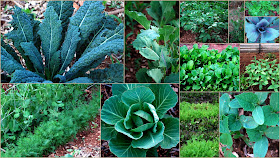
Though it's been January-dreary for the past week or so around the Hill Country, Spring, for many of us, is really just around the corner as far as gardening goes. Just as you get the last boxes of holiday decorations stashed away, it's time to get planning.
We can expect peas and asparagus early, and those spring greens for which we'll clamor in a few months, need to be in the ground as early as this month or next.
Today, we'll take a look at the next few weeks of what and when to plant in Zone 8. For information on planting dates for your particular zone, consult this chart to determine the zone in which your garden grows, and then adjust the following to-dos accordingly. And later today, information on preparing your plots--getting the best start. Cause we all know that
The beginning is the most important part of the work.--Plato. And Mom.
In the Garden--January
Fertilize: Fertilize asparagus, strawberries, daylilies, iris, pansies and roses. Use compost, manure or a complete fertilizer.
Water: Water everything well before a freeze, but avoid overwatering.
Transplant: Plant bare root and container grown roses, shrubs, trees, groundcovers and vines. Move hardy seedlings outdoors. Divide and transplant perennial herbs and summer and fall blooming perennial flowers. Donate extras to a plant sale.
Prepare Soil: Add compost and/or fertilizer. Till deeply. Test soil (forms available at the Extension Office). Check winter mulch and replenish, if needed. Stockpile leaves for mulch and composting throughout spring and summer.
Lawn Care: If lawn has a history of brown patch problems, treat with a labeled fungicide late in the month. Repeat treatment in 3 to 4 weeks, if needed.
Diseases/Pests to look for: Check for mealy bugs and for scale on houseplants. Need a plant problem identified? Bring a sample in a ziplock bag to the a County Extension Office near you.
Things To Plant In January
Flower Plants: Alyssum, Butterfly Weed, Calendula, Candytuft, Cornflower, Dianthus, Daisy (African, Michaelmas and Painted), Gaillardia, Liatris, Edging Lobelia, Nasturtium, Ornamental Cabbage and Kale, Pansy, Phlox paniculata, Snapdragon, Stock.
Flower seeds: Ageratum, Alyssum, Balsam, Bluebell, Calendula, Candytuft, Cleome, Coreopsis, Cornflower, Delphinium, Echinacea, Feverfew, Gaillardia, Gayfeather, Gerbera, Hollyhock, Hyacinth, Larkspur, Lobelia, Lupine, Nasturtium, Phlox, Poppy, Queen Anne’s Lace, Petunia, Snapdragon, Sweet Pea, Sweet William.
Bulbs: Allium, Alstroemeria, Amarcrinum, Canna, Crinum, Dahlia, Daylily, Gladiolus, Hosta, Hyacinth, Spider Lily (Hymerocallis), Liriope, Monkey Grass, Rain lily, Society Garlic, Tigridia, Tulip
 |
| Just around the corner...... |
Vegetables:
Early—Mid Month: asparagus crowns
Mid—Late Month: Broccoli, Cabbage, Carrots, Cauliflower, Kohlrabi, Lettuce, Onion sets, Peas (English & edible pod), Spinach
Herbs: Garlic chives, Horseradish, Parsley, Chervil
Fruit: Bare root or container grown pecans, fruit trees, grapes, berry bushes
Other Things To Do:
Time to get the garden ready for the new growing season. Clean, repair and replace garden tools. Create a garden plan to help organize chores and planting schedules. Start tomato, pepper and eggplant seedlings indoor under fluorescent lights.
(Courtesy of the Garden Guide for Austin & Vicinity, published by the Travis County Master Gardener Association, copyright 2000-2002, via
Central Texas Gardener)





























